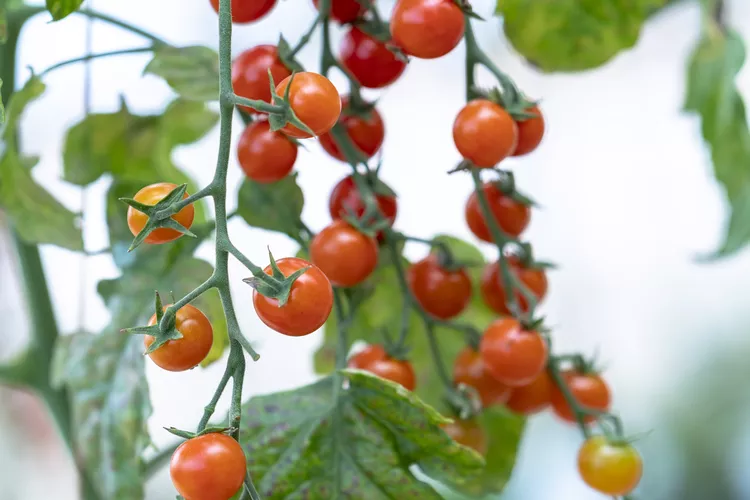Growing Tomatoes Upside Down—Here's What You Need to Know

Growing tomatoes upside down is a technique that has been around for more than a decade. Although upright planting is a better way to grow tomatoes in most cases, growing tomatoes upside down successfully is possible with a little know-how. Hanging tomato planters are most useful where garden space and sunlight is limited. Here’s everything you need to know about making an upside down tomato planter and growing tomatoes in this unique container.
Grow Tomatoes Upside Down in the Right Spot
Before planting your upside down tomato, first make sure you have a suitable place to hang it up. Consider the full weight of the planter and the available sunlight.
Think About Weight
An upside down tomato planter is very heavy. The pot, moist soil, and fruit-laden plant can easily weigh 50 pounds or more. Sturdy hanging hardware and a secure structure to mount the hardware to are essential. If wind is a concern in your area, aim to hang the container in an area that is shielded from wind.
Sunlight
Upside down tomato planters are often suspended from a house’s eve or a porch roof. These are sturdy locations for hanging the heavy containers, but they may lack a key element—sunlight. Tomato plants, whether they are growing in the garden or in a container, require more than 8 hours of direct sunlight a day to produce fruit. Porch roofs, houses, and nearby trees all have the potential to cast shade on a hanging container. Choose the growing location after analyzing how sun and shade impact the space through an entire day.
Plants can tell up from down and they’ll do everything they can to grow upright. When a tomato plant is growing upside down in a hanging container, the stems will grow in a U-shape to orient the growing tips upward. The area along the stem that makes the U-turn can be weak and easily damaged under the weight of fruit or in a strong wind.
How to Make an Upside Down Tomato Planter
1. Gather materials.
You’ll need a 5-gallon bucket with a sturdy handle and a lid, a drill with a saw attachment for creating a 2-inch hole, potting soil (not garden soil, which is too heavy and doesn't drain as well), and two sheets of newspaper.
Several plastic, mesh bags are on the market for growing tomatoes upside down. Soil dries out quickly in these porous grow bags. It is almost impossible to keep a mature tomato plant in a plastic bag hydrated on a hot, windy day. Use a 5-gallon bucket for growing tomatoes upside down.
2. Choose the right tomato plant.
Choose a small-fruited type of tomato, such as a cherry, grape, pear, or currant tomato. Roma, beefsteak, and slicer-type varieties produce fruit that is too heavy for the branches of a suspended tomato plant. Some great small-fruited varieties include ‘Super Sweet 100,’ ‘Sun Gold’, ‘Jasper,’ ‘Jolly,’ and ‘Valentine.’
3. Make a planting hole.
Using the drill and saw attachment, make a 2-inch-wide hole in the bottom of the bucket.
4. Add soil and water.
Cover the planting hole with two layers of newspaper. Fill the bucket three-quarters full of potting soil and water it well, then put the lid on the bucket.
5. Prepare the tomato seedling.
Remove the tomato seedling from its nursery container and gently wrap the root ball with a single layer of newspaper. The newspaper will protect the root ball as you wedge it into the hole in the bottom of the bucket.
6. Plant the seedling.
Set the bucket on its side so you can access the planting hole. Carefully make a hole in the newspaper covering the planting hole and push away soil to make room for the seedling’s root ball. Place the seedling in the planting hole.
7. Hang the planter.
Hang your upside down tomato planter in a sturdy location that can handle the full weight of it. Remove the lid if desired or leave it in place and remove it as needed to water.
Upside Down Tomato Care Tips
Water an upside down tomato planter as you would any container plant. Check the soil moisture daily. If the top inch of soil is dry, water the container deeply until water runs out of the bottom of the planter. Aim to keep the soil moist, but not wet. Soil may wash out of the container during watering. Replace lost soil by topping off the container with fresh potting soil as needed. Harvest tomatoes as soon as they're ripe to relieve stress on the hanging branches.